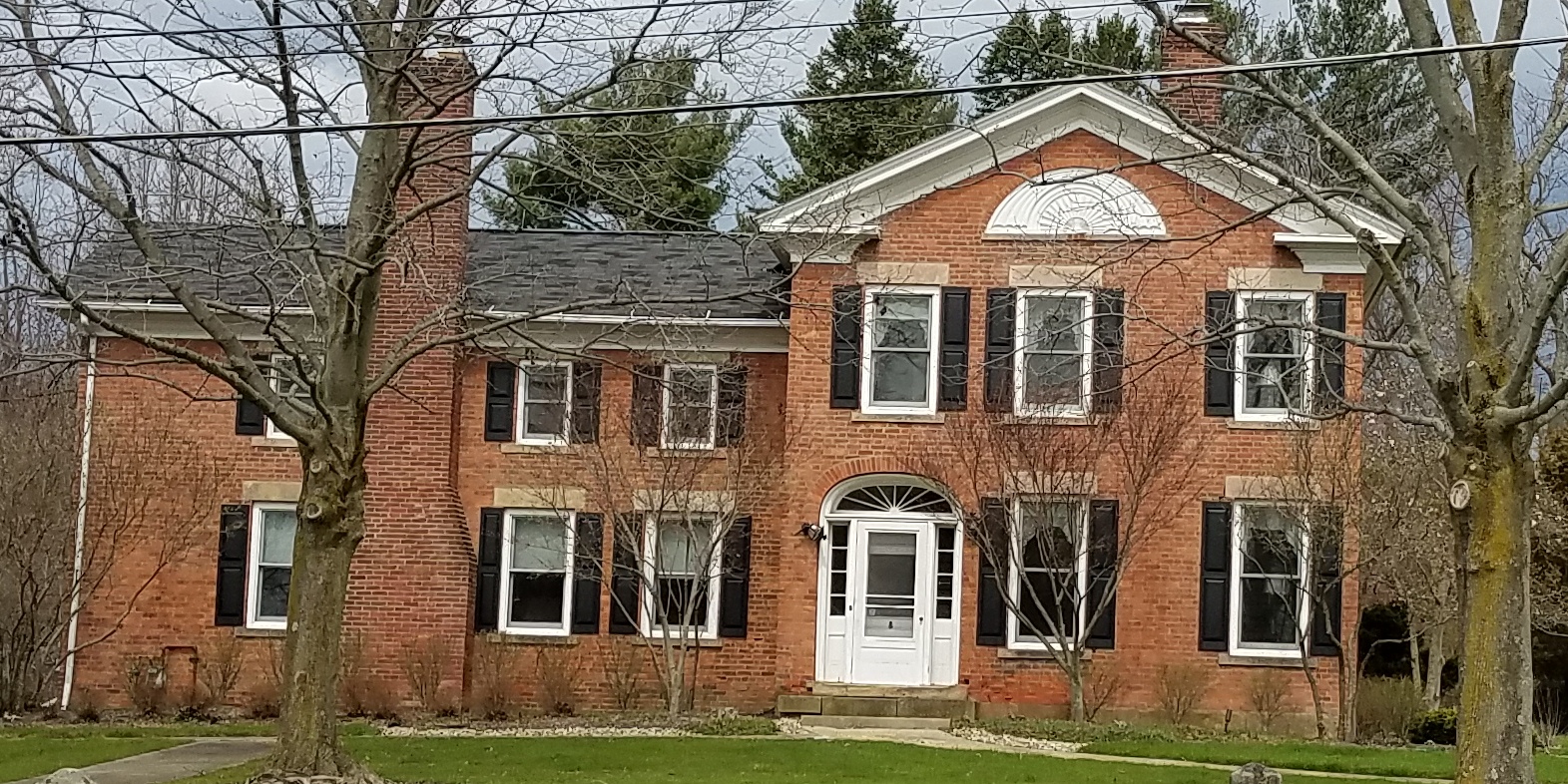Thurs, Nov 13, 7:00pm at Barlow Community Center. Dr. Megan Shaeffer discusses the history and archaeology of Wood Hollow Metro Park
Flood Property Gains Historic Designation
The home at 1213 Barlow Road, popularly known as the “Flood House,” has been added to Hudson’s registry of historic properties by Hudson Heritage Association, the group has announced. The property is now eligible to receive one of HHA’s distinctive black and white house markers, which can be seen on historic buildings located throughout Hudson. Background on the property was compiled by members of HHA’s research committee. A brief report summarizing that research was presented at the group’s April 6th meeting.

Traditionally, HHA designates historic properties with the name of the first owner-occupant. In some cases, the name of a subsequent owner is added to the official name if that person played a significant role in the property’s past. HHA has indicated that the Flood House will be officially added to its roster as the “Ellsworth-Kilbourne House,” with an original construction date of 1825, which makes it one of the oldest surviving properties in Hudson.
John Ellsworth was the first owner of the property on which the house at 1213 Barlow sits, according to Portage County tax records for 1825. By 1828, Asahel Hooker Kilbourne had acquired the property and tax records indicate the property then included a frame house. Sometime around 1833, a brick house appears on the tax records – likely the second brick house in Hudson – and researchers speculate the brick structure may have been constructed around the existing frame building. Bricks for the house likely came from Case Barlow Farm, which operated a brickyard at the time.
Asahel Kilbourne came to Hudson with his parents in 1801 when he was five years old. In 1822, he married Sophronia (Sophia) Curtiss and they eventually had nine children. Before he was 25, he owned a dry goods store, a tannery and a farm. Eventually, he became a justice of the peace and served as deacon of the First Congregational Church in Hudson for 15 years. Later, he became a deacon of the Free Congregational Church of Hudson, known for its fervent anti-slavery stance and leadership in Hudson’s abolitionist movement.

(photo circa 1865)
The Ellsworth-Kilbourne House was subsequently purchased by Sylvester Thompson in 1856 after Ashahel Kilbourne died. A prominent early Hudsonite, Sylvester Thompson at various points in his life served as an assessor, a justice of the peace, an associate judge, a Common Pleas judge, a representative to the Ohio Legislature, a commissioner for the Cleveland and Pittsburgh Railroad, an owner of the City Bank of Akron and mayor of Hudson. In 1864, he turned over the house at 1213 Barlow to his son, Sherman Peck Thompson, who lived in the house with his family until 1909 – making him the owner with the longest occupancy. A successful farmer, Sherman grew the property to 335 acres. His son Frederick lived in the house until 1921, when the deed to the property passed to the Cuyahoga Falls Sanatorium, which held it in receivership until 1933. Several other individuals subsequently owned the house until 1948, when Earl D. Flood purchased the house, several outbuildings and 200 acres, and moved the Flood Company to the site, where it operated until 2006.
Based on historic photographs, the brick home at 1213 Barlow originally was designed in the Federal style. It was remodeled in 1860, when it acquired its current Greek Revival characteristics. Many of the Federal details, however, are still intact: a two-story main mass with a side wing, a shallow roof pitch and brick balustrade, a front doorway with sidelights and an elliptical fanlight in the doorcase and attic. The window lintels and sills are sandstone and the window design in the main mass is the same as it was originally. The roofline, which originally included a parapet façade similar to those seen on the sides of the Brewster Store (now, Binary Defense Systems) on Aurora Street in downtown Hudson, was redesigned during the 1860s to include a Greek Revival gable with cornice boards facing Barlow Road.